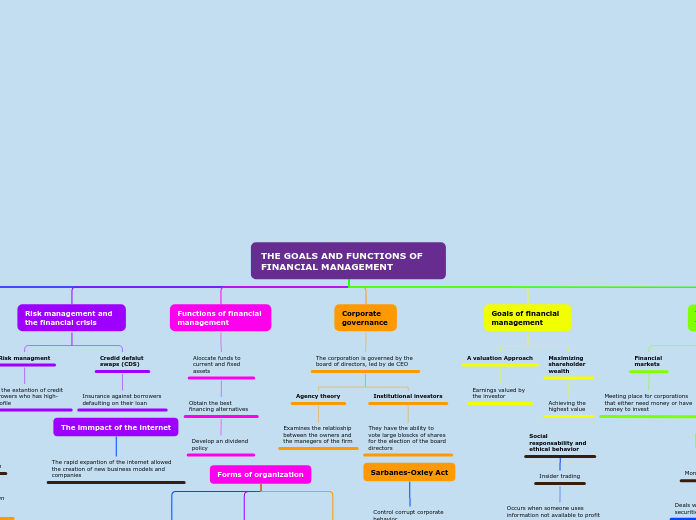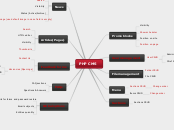Supply Chain Risk
As supply chians are globalized, the company is facing more appearence of new risks to disrupt supply chian, which could bring a huge loss the company should be incurred. Thus, preparing for and dealing with those risks are crucial to be competitive in any industries.
Let's start the wonderful journey to learn the type of supply chian risks, the concept of supply chain risk management and impacts of dilitalization on how to mitigate the risks.
Real case example (Amazon)
SCM Department
Minimize SCM cost
Contract negotiation with business partners
Review the SCM risk and condition with business partners, including cost minimization.
Re-posting cost ; Last 1 mile
Amazon Hub
Amazon Hub is very similar service with Amazon Rocker, Hub/blue is small size than Orange rocker due to the business partner's matter. customer can use it by smartphone, cord number or QR cord.
Amazon Rocker
Customer can select the place to get their shipment at station, university and hyper market.
Developing home post box
SCM team develops post box with post office and house makers to reduce the customer shipment promise break such as delay and re-posting cost
.
Shipping cost ; Science of brown box
SCM team develop many types of brown boxes and envelopes by local level to minimize shipping cost and avoid not shipping 'air'.
AWS SCM solution
Amazon provide SCM risk management cloud tools at AWS, Hub, rocker services and business partners services in global. Amazon its self use these technologies to manage many risks.
Fulfillment center operation
1st generation SCM Automation (Inbound)
1st generation SCM automation ultimate goals were 1) shipped shortest time for customer to minimize the handling cost, 2) handle accurate data for inventory and shipment, 3) 'flow' is the best, 'stack' is bad for cost and customer. However, the 1st generation had a manual process in several areas.
2nd generation SCM _Robotics Fulfillment center (Inbound-Store)
2nd generation was introducing Robots by kiba system! It works for 24 hours!!! All shelves contain inventory and merchandise forecast-calculated by AI machine learning in the cloud.
3rd generation SCM_ AWS Fulfillment center
3rd generation SCM has equipped Auto scanning for inbound and outbound by barcord/UPC data.
Robotics picking process
This movie is very precious for Amazon.
Sorry all are Japanese but you can see real picking process at 2nd generation fulfillment center.
Outbound-shipping process
Outbound/shipping process at robotics fulfillment center.
Outbound process has a important sign of color, you can recognize the differences in the video.
Orange ;
It is very danger, worker cannot enter or touch anything
Yellow;
It is dangerous, workers need to pay attention to the products and environment.
Inbound process
Inbound automation in Amazon UK, please look at the floor. This picture shows one day/one hour inbound volume in fulfillment center.
Store by free-location
Amazon's store process is very unique, products have no address, it adapts 'free-location system' for reducing managing cost. It of course use cloud forecasting, IOT of Cloud, blockchain, auto scaling and so on.
Picking -Outbound- Shipping process
It can see real picking and free-location of products. Our class learned about Toyota's factory system before, Amazon fulfillment center also adapts some Toyota's system. Maybe some of you can find same points from this video.
Managed Blockchain
Blockchain has a property of ensuring both transparency and security, it has the potential to further improve efficiency and accuracy of supply chain management.
Real case;
"Traceability of containers" and "digitization of trade documents". The former can share information with high transparency and helps blockchain. Regarding the latter, blockchain's smart contracts are expected to reduce costs and improve the efficiency of the industry as a whole by digitizing trade-related documents and making them paperless.
Big Data
Big data and Relational data base are important for SCM forecasting. Because, SCM needs many various data at the same time.
Data Lake
Have you ever hard about Data lake?
The utilization of 'data lakes' is attracting attention as an initiative for SCM digitization.
Data lake is a concept and service that connects company's data with AI machine learning(AIML) on the cloud and analyzes it. According to a survey by Aberdeen corporation, companies that implement data lake outperform their competitors by 9% in their main business revenue growth.
With the introduction of the data lake, inventory, ordering, lead time to arrival, weather, returns, various costs, and risk simulation can be performed instantly. It enables decision-making based on prior information and enables highly accurate management.
Forecasting (AI machine learning)
Cloud services can be executed by combining multiple applications.
This forecast tool is primarily focused on linking SCM resources, IoT, and finance with machine learning for forecasting.
This is also used by Amazon Retail. Of course, it's customized.
Auto management (Auto scaling)
In particular, Auto Scaling is used in SCM and risk management, which have a wave of operation.
Business operations have waves. It means that there are waves in server and data operation even in machine learning and forecasting. In order to perform machine learning quickly, "Auto Scaling" allows machines to automatically respond to the number of accesses so that various people can access the data automatically.
https://en.wikipedia.org/wiki/Autoscaling
AWS Cloud SCM example -Carrier Refrigeration CEO David Appel -
2020 best practice of Real SCM risk management case, Carrier Refrigeration corporation. They decided to use the SCM cloud tool of AWS then succeeded to minimize the risk in the US.
Carrier is using AWS to transform how food and pharmaceuticals are shipped, preserved and protected. In this video, CEO Dave Gitlin describes how AWS is enabling Carrier to innovate on behalf of its customers. Carrier is a 100-year-old company that provides cold-chain solutions—uninterrupted refrigerated distribution for perishable foods and medicines. The company is building Lynx, a digital connected platform for cold-chain logistics, using AWS IoT, AWS Analytics, and AWS Machine Learning. Lynx will provide end-to-end visibility and intelligence across the cold chain to help deliver food and pharmaceuticals safely and with much less waste.
Weather Risk Management
Weather data is one of SCM risk management. In particular, snow and freezing information are very important for Amazon. Snow and freezing will inevitably stop the delivery truck and need to pay attention to traffic accident more than usual.
For weather data in the case of Japan, everyone can refer to the public data of the Japan Meteorological Agency.
Customer Service for shipment delay, promise-break
-The Impacts of Digitalization on SCRM-
How can digitalization contoribute to SCRM?
The concept of digital supply chain has huge potential to mitigate the risks which we raied on the other side of the map and traditional supply chian is struggleing with.
The digitalization enables the company to manage supply chain risks in a proactive and reactive way by establishing digital supply chain ecosystems.
Internet of Things
IoT is fundamental technology for digital supply chain, and it is revolutionizing supply chain, such as data collection, accurate forecasting, order management, replenishment, warehousing, and transportation.
Cloud computing in SCM
Cloud computing is also fundmental technology for digital supply chain.
Cloud computing enables digital supply network which can bring the followings advantages:
- Connectivity to enhace visibility and collaboration with in SC
- Intelligence to support decision makings as well as accelerate innovation
- Scalability to maximize efficency and flexibility with personalized experience for customers
- Speed to strengthen responsiveness
Digital platform for SC ecosystem
Digital platform for SC ecosystem can enhance real-time visibility and collaboration within SC by connecting with each other digitally, which means all relavant information including demand, inventory level and the status of delivery is shared on a timely basis and it enables the company to collaborate with suppliers to deal with issues in a responsive and flexible way.
This agile and responsive SC can react to risks effectively. For instance, in case of natural disasters, the company can understand the global context (demand, inventory level and the status of delivery) , and react to such a urgency by collaborating with suppliers (e.g. change the sourcing and delivery routes) on a timely basis.
Additioanlly, although dual sourcing strategy can be helpful to prepare for disruption (phisical and economical) of supply network due to natural disasters or trader war, it can make SC more complex and costly. Digital SC ecosystem enables the company to control SC efficently, which can be financially beneficial as well.
Enhance real-time visivbility and collaboration within SC
5G
Block chain
Security
Decarbonaization
Recently, many countries have strengthened environmental regulations, which could be risks for global supply chains.
Enhanced data management with high visibility due to block chain enables suppliers to provide a more accurate quantification of their carbon emission and would be helpful for companies to identify their potential operational exposure to risks related with environmental issues.
Efficent spare parts management
From a perspective of the cost management, spare parts could be one of the main problems in all supply chain facilities due to erratic demand and hard prediction, which leads the company to have high level of inventories.
However, by advanced technologies of 3D printing, the company can manufacture on-demand. This can contoribute to not lowering costs but also mitigating business continuity risks, since the company can manufacture on-demand anywhere in the world, which means loocation-based and operational risks related with suppliers and sites becomes irrevant.
3D printing
Autonomous Logistics
Autonomous logistics is evolving and brings about huge benefits to the company. This can increase visibility of the end to end in supply chains (ideal pick up time, access availability of vehicle, and coordinate with distribution hub) and help the company to make decision in a cost effective and flexible way, which can be applied to the context of events causing disruption of SC including natural disasters.
The main cost saving comes from reducing lead time and labor, which also leads to preventing from labor disputes.
Moreover, even in case of pandemics, autonomous vehicle can deliver products to customers, since there is no of only a few contacts with people.
Autonomous ecosystem
Softdriving airship
Dronz
Autonomous Vehicle
Autonomous shipping by robot
Smart warehousing
A smart warehouse is to automate various components of warehousing operations to improve productivity, efficiency, accuracy and flexibility, which means this can optimize throughput and reduce overheads with adding flexibility to operations (also reduce human error and lower risk of injury).
The smart warehouse can also contribute to mitigate business continuity risks, since many parts of operations are automated, so the operational risks related with labor-force becomes irrelevant.
Amazon smart warehousing
You can dig deeper into how Amazon works on SCMR at the bottom of the map.
RFID
Robotics
Data analytics
Historically, companies have struggled with having accurate forecasting to deal with variability and decrease costs, and it is critical for the companies to be competitive in any industries.
Recent technology advancement, such as Big data, AI and machine learning, enables them to improve forecast accuracy, and it contributes to not only optimize each element with SC but also mitigating supply chain risks.
For instance, supply chain network analytics allows the companies to gain visibility into all fragilities and vulnerabilities of their supply chains, which would be helpful to design and optimize supply chains from a perspective of costs, risks and service (supply chain planning).
Additionally, early warning system with big data can identify critical events that impact supply chains like natural disasters and informs the company and suggest appropriate measures to minimize the consequences.
Big data
AI
SC network anlytics
Accurate forcusting
Early warning system
Maching Learning: Improving Forecast Accuracy with ML
-Type of Risks-
What type of risks are there?
We defined six types of supply chain risks based on PESTEL analysis.
- Political
- Economic
- Social
- Technological
- Environmental
- Legal
Classifying supply chain risks helps the company establish strategies to deal with them and improve supply chain resilience.
Legal
As with social risks, the type of risk can be relatively anticipated with a low negative impact on supply chains, and can be managed proactively by increasing robustness of supply chain systems. Continuously monitoring disruptive trends and events is also crucial.
Regulatory changes
Sustainability
Eco energy (wind farm and solar panel for SCM)
Sustainable aviation fuel (SAF)
Utilization of aviation fuel that does not emit carbon dioxide
Electronic automobile
Environmental
As the graph by McKinsey indicates, natural disasters has recently been increasing all over the world, and as the globalization is proceeding, the natural disaster in a country could disrupt global supply chains. The type of risk is "Black Swan", which is hard to anticipate but give a huge negative impact on supply chains.
COVID
Imact on consumer behabior
Brand damage by COVID
Worker's health management
Earthquake
Storm
Shipment date promiss in Sonw
Flood
Technological
The type of risk can be hard to anticipate, and give a huge negative impact on supply chains, as digitalization and globalization are proceeding. Especially, the threat of cyberattack has increased across the world year after year.
This can be managed by building crisis management capabilities and resilience of supply chain.
Cyberattack
Supply chain DDOS attack
Social
The type of risk can be relatively anticipated with a low negative impact on supply chains, and can be managed proactively by increasing robustness of supply chain systems. Continuously monitoring disruptive trends and events is also crucial.
Changing customer requirments
Labor disputes
Strike
Compliance issues
Economic
The bankruptcy of an individual suppliers would be hart to anticipate, but low impact risk. This can be managed through diversification.
On the other hand, historically, many companies are struggling with demand variability and accurate forecast could be crucial to be competitive in any industries.
Demand variability
Demand Forecasting
The Bullwhip Effect
Supplier Bankruptcy
Political
The type of risk can be anticipated and give a huge negative impact on supply chains. Geopolitical uncertainty, especially trade war or tariff changes, requires companies to check and review supply chains continuously and to adjust them if needed from a short-term and long-term perspective.
Terrorist Attack
Tariff
Trade War
Tariff escalation btween the US and China
Brexit
Cross Boarder Risk
Xinjiang cotton
- Supply Chain Risk Management (SCRM)-
How do we manage supply chain risk?
Supply chain risk management is the strategic approach and process to identify, assess and mitigate the risk in the end-to-end supply chain. The followings are key steps based on type of risks (According to McKinsey) :
Managin known risks
- Identify and document risks
- Build a supply-chain risk-management framework
- Monitor risk
- Institute governance and regular review
Managing unknown risks
- Building strong defenses
- Building a risk-aware culture
SCRM strategies
The followings are some important examples of the practical strategy to mitigate supply chain risks:
- Enhance real-time visibility within SC
- Seamless collaboration beyond physical boundaries
- Have a dual sourcing strategy
- Strengthen agility and resilience
Build agile and regilient SC
Dual sourcing
Seamless collaboration
Enhance real-time visivbility within SC









